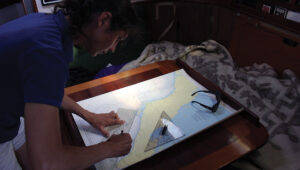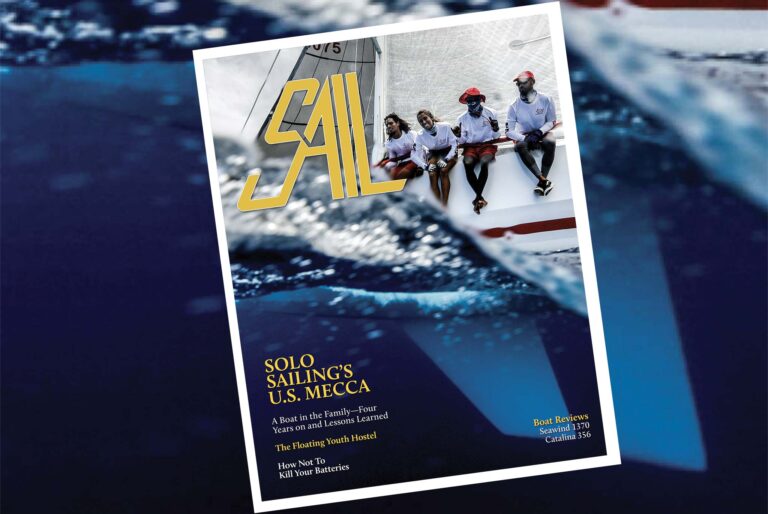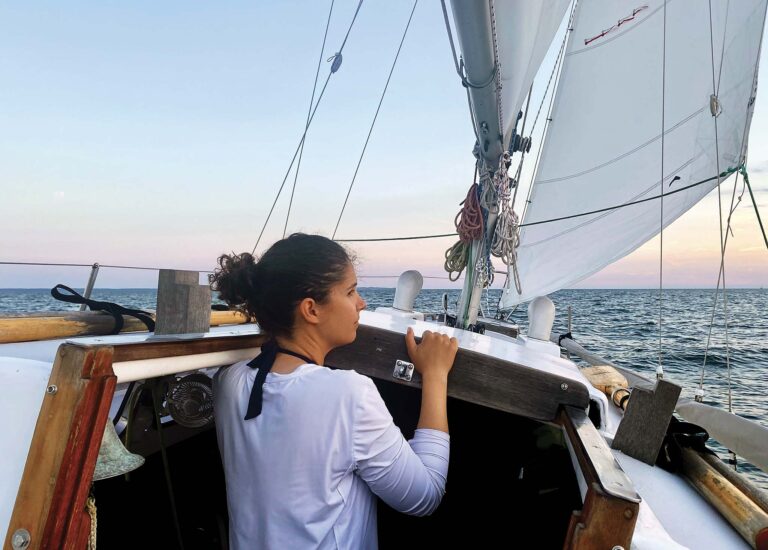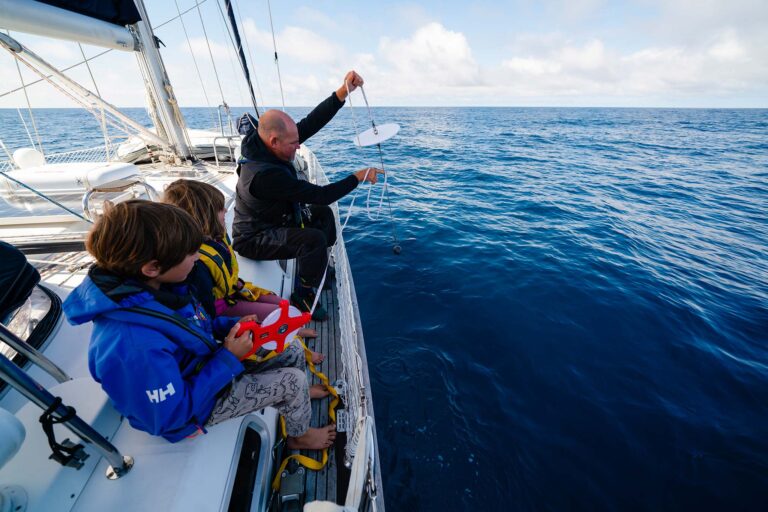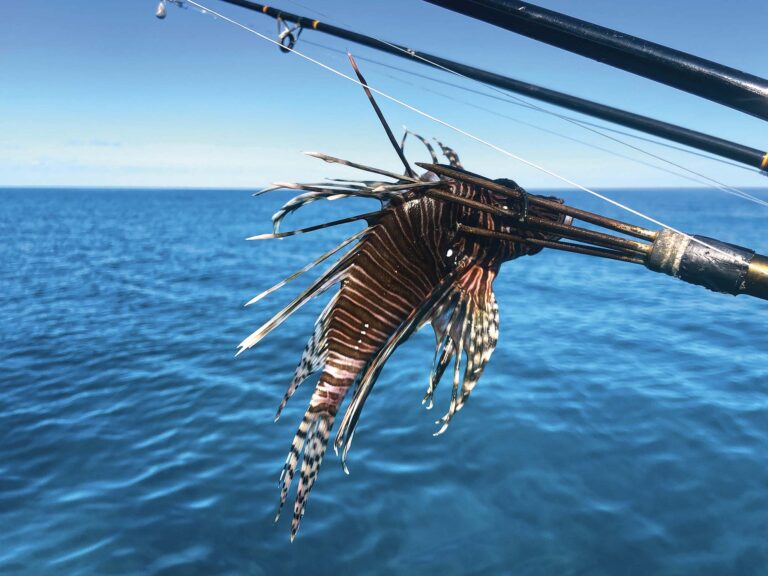Misleading as its name may be, Bahamian mooring is an anchoring technique that can be used just about anywhere. If you’re looking to secure your boat in a jam-packed anchorage or in a tide-scoured waterway, or if you’d just like a little extra security, a Bahamian moor can be very handy–if you know all the little ins and outs.
Basically, a “Bahamian mooring” involves setting two anchors instead of just one, placing them so as to keep your boat in a fixed spot, just like when it’s on a regular permanent mooring. As with any anchoring situation, exact placement of the two anchors depends on bottom characteristics, the prevailing wind, tidal currents, proximity to other vessels in the anchorage, and expected changes in the weather and current that may take place while you are anchored.
The technique is most commonly used in narrow tide-scoured channels, of the kind that are numerous beyond measure amid the islands of the Bahamas—thus the name. I’ve seen Bahamians use this system in tidal creeks that were only twice as wide as the length of the boat being anchored. In fact, over the years I’ve found this is really the only limitation when setting a Bahamian mooring: you need at least a boat length of space either side of the spot where your boat ends up sitting, so it can swing in either direction without getting into trouble.
I use the technique most often in crowded mooring fields where I can’t otherwise find enough room to anchor. In most cases, I find a spot at the edge of the mooring field, usually near the shoals commonly found at the edge of a designated anchoring area. With a draft of four feet, my Cape Dory 27 isn’t exactly considered a shoal-draft boat. But if I can find a spot I’ve determined will have five feet of water or more at low tide, I get ready to drop my hooks, Bahamian style.
Usually the best way to set a Bahamian mooring is to first drop your primary anchor with the boat’s bow pointed directly into the wind, as in normal anchoring. Once you’ve laid out an appropriate amount of scope, secure and set the first anchor as you normally would.
Then, with the first anchor set, pay out more rode and double the amount of scope. For example, if you’re anchoring in 10 feet of water and have set your anchor on 5:1 scope, or 50 feet of rode, pay out another 50 feet and increase the scope to 10:1. When your boat “hardens up” on the additional rode, drop your second anchor. Then pull in half of the first anchor’s rode while paying out rode on the second anchor. Once the two anchors have about the same amount of you have a Bahamian mooring.
If there is some current running in the anchorage, setting the two anchors becomes a bit trickier. In general, most full-keel boats like mine will respond to a modest current (1 knot or more) more readily than a modest wind (10-15 knots). Boats with more windage or less keel area will respond more readily to the breeze. In any situation in which the current is dominant, rather than dropping your first anchor upwind of where you intend to set your second anchor, you should drop it up-current of where you want to be.
In some situations the wind and current may neutralize each other, causing your boat to twist and turn without drifting one way or another. Here you can set your second anchor by motoring away from the first, but you must be sure to back away, so as to keep your prop clear of the rode. Or you can use your dinghy to take out the second anchor.
To ensure a tight swinging radius, it’s important to leave as little slack as possible in the two anchor rodes. To minimize slack, it’s critical to make sure both anchors are properly dug into the bottom. Of course, this is easy to do with the first anchor. By using the wind (or current) in conjunction with the boat’s engine run briefly in reverse, you can usually get the first anchor well set. However, the second anchor may require a slightly different approach.
Usually, I set my second anchor using a spare snatch block and a halyard winch. I secure the snatch block to something sturdy near the boat’s bow. Then I run the second rode through the block to the winch and crank on it to remove slack from the rode until I’m sure the second anchor is well dug in.
Of course, the two anchor rodes must have enough slack to account for the rise and fall of the tide. Unless the tidal range is more than 10 feet, I’ve found no extra slack is needed. With tides bigger than 10 feet, I pick up slack at low tide and then let it out again as the tide rises. Six feet of slack should accommodate a tidal range of about 20 feet.
As the boat swings in the current and wind, the two rodes will inevitably twist together, which tends to tighten them up. Moreover, snarled rodes are a nuisance when it comes time to weigh anchor. To minimize the hassle, I use two procedures.
First, I run both rodes through one bow chock or bow roller. Running them through two separate leads will twist them up in a spot that’s hard to reach, usually just below the boat’s bow. Two separate leads also makes the ensuing twist-up much tighter.
To make unsnarling the rodes easier, I run one of them over a solid object that can be easily removed to create the slack needed to do the untwisting. I also keep all of this rode on deck so I can easily untie it and unwind it around the first one.
As valuable as this technique is, Bahamian moorings are inappropriate for some boats and in some situations. If your boat has a spade rudder, an exposed prop and shaft, a saildrive or a fin keel with wings, one of the anchor rodes may foul these underwater appendages when the boat swings to the wind or current.
It’s also unwise to set a Bahamian mooring in an anchorage where other nearby vessels are swinging on only one anchor. When the wind or tide shifts, these boats may ride over one of your rodes and foul it. I also avoid setting a Bahamian mooring in areas where there is heavy traffic. Many recreational boaters like to pass fairly close to the sterns of anchored boats, and they often do not suspect that there may be a second anchor rode running abaft the boat.
Still, with anchoring space increasingly at a premium and the cost of an overnight mooring steadily on the rise, knowing how to set a Bahamian mooring can be useful. At the very least, laying on two anchors will double your peace of mind when the wind and tide shift in the middle of the night.
Illustration by Andy Steer. Photos by Ken Textor

